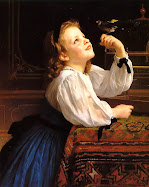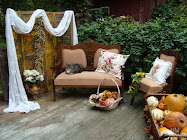
This title is an old Irish proverb and very valued in the Irish community. I have traced my father's family back to Wales, but I understand that there is a strong connection with Ireland. I've yet to uncover proof of that, but I know from my own freckles and BG (before gray) auburn highlighted hair, it must be true. One of my sons is a redhead and so are all of my cousins on my Dad's side.
Do any of your relatives come from Ireland? This would come as no surprise as over 40 million Americans claim Irish ancestry. On March 17th, that number increases considerably when we all celebrate St. Patrick's Day.
The earliest recorded American observance of the day honoring St. Patrick, the patron saint of Ireland, was in Boston in 1737. But, the Irish as an ethnic group did not begin to make their presence felt in America until their numbers began to swell during the Nineteenth century.
St. Patrick’s Day became the day the new immigrants remembered their strong ties to the “auld sod” with parades and banquets. By the turn of the century, the celebrations of St. Patrick’s Day had become a distinctly American custom, with everyone, no matter what his nationality, wearing a bit of the green.

Curiously, the celebration of St. Patrick’s Day in Ireland has evolved into a high-spirited holiday only in the past thirty years. Since the day was (and still is) a Holy day, people attended a Mass and all the pubs were closed. An authentic St Patrick’s Day observance with music, dance, food and liquid refreshment had to take place at home.
A ceilidh (Gaelic for “dance” and pronounced kali) is a gathering of family and friends to hear traditional Irish music, do a bit of step dancing, eat thick slices of soda bread slathered with butter, drink cups of strong tea or other liquid refreshments and engage in the Irish indoor sport of conversation.
But at the heart of any ceilidh is the Irish music, of which there are two distinct types: energetic dance tunes or lamentful narrative songs, usually ballads. In Irish reels, the main melody is repeated over and over again until it leads into another similar tune. The listener, who is unfamiliar with its unique circular structure, frequently comes away with the impression that he has been tapping his feet to one long Irish jig for over two hours.
Excerpts from Sarah Bainbridge
















